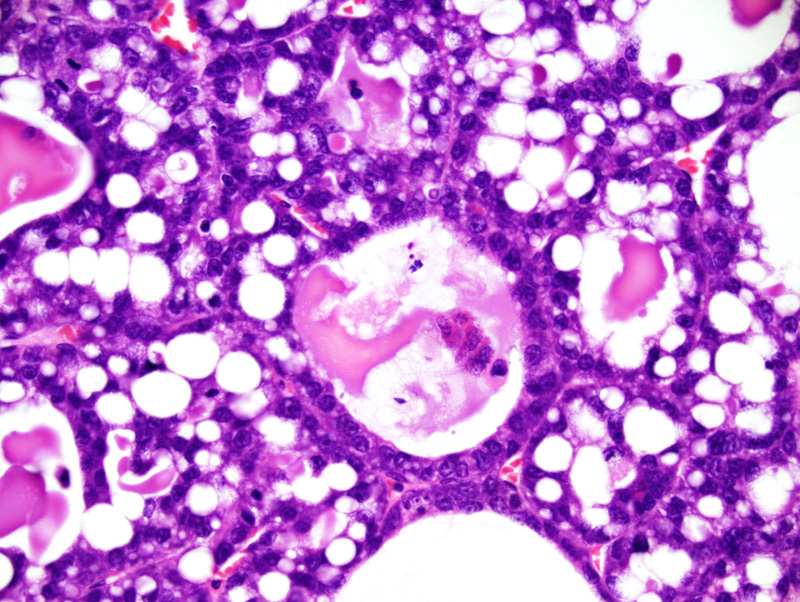Caption |
Secretory mammary adenocarcinoma with squamous differentiation: this photomicrograph is representative of the glandular portions of the neoplasm. Neoplastic cells form ectatic glands that contain a proteinaceous fluid. The glands are lined by a one cell-thick epithelium which often piles-up disorderly. Neoplastic cells are cuboidal to polygonal, with indistinct cell borders and a moderate amount of strongly amphophilic cytoplasm which often contains large numbers of lipid vacuoles and proteinaceous droplets. The nucleus is central, round to oval, and normochromatic. Anisokaryosis and anisocytosis are mild. A few neoplastic cells undergo single cell necrosis. |
Description |
Adenocarcinoma, secretory, with squamous differentiation, mammary gland |
Age at Necropsy |
273 days |
Notes |
This mouse had undergone 4 cycles of gestation and lactation. |
Contributor |
Gallego MI (J:94332) |
Pathologist |
Mikaelian I (J:94320) |
Method |
H&E |
